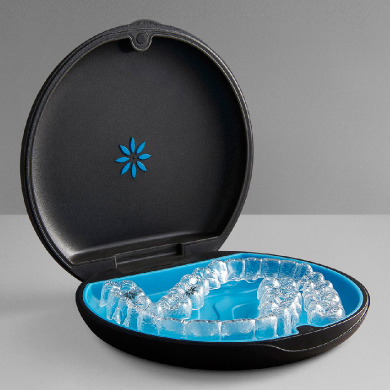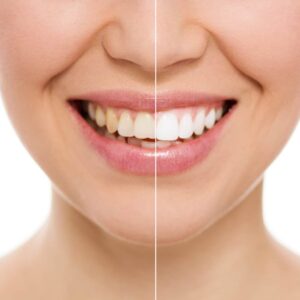Invisalign treatment has taken the world of orthodontics by storm, revolutionizing how we correct dental alignment. But the question on many potential patients’ minds is, is Invisalign worth the cost? This blog post aims to shed light on that very question, diving deep into the cost-benefit aspect of Invisalign and whether it is indeed a worthy investment.
Invisalign treatment price varies depending on several factors, including the complexity of the correction needed and the duration of the treatment. However, the high cost of Invisalign braces often makes people hesitate. This is where understanding the value of Invisalign treatment comes into play. It’s not just about the price tag; it’s about the long-term benefits and the impact on your health, confidence, and overall quality of life.
Affordability of Invisalign treatment is a subjective matter, as what might seem expensive to one might be cost-effective to another. However, when considering the expenses, it’s essential to note that Invisalign procedure cost includes not just the aligners, but also the personalized treatment plan, regular dental monitoring, and the comfort of nearly invisible braces.
In the following sections, we will dive into the specifics of the Invisalign treatment price and whether the Invisalign braces are worth it. Stay tuned to get a comprehensive understanding of the Invisalign expenses, and make an informed decision about whether this modern orthodontic treatment is the right investment for you.

What is Invisalign Treatment?
Invisalign treatment, a revolutionary approach to orthodontics, is an effective way to correct various dental problems like crowding, spacing, and bite issues. It is a preferred alternative to traditional braces due to its comfort, convenience, and discreet nature. Invisalign uses a series of custom-made, clear aligners that gradually shift your teeth into their proper position. These aligners are virtually invisible, comfortable to wear, and can be easily removed for eating, drinking, brushing, and flossing.
Invisalign treatment offers numerous benefits that make it a worthwhile investment. First, the aligners are almost invisible, meaning that you can straighten your teeth without the aesthetic concern associated with metal braces. Second, the aligners are removable, allowing you to maintain your regular oral hygiene routine and enjoy your favorite foods without restriction. Third, Invisalign treatment usually requires fewer office visits than traditional braces, saving you time and potentially reducing overall treatment costs. Lastly, many patients find Invisalign treatment more comfortable than braces, with fewer mouth and gum irritations.
So, is Invisalign worth the cost? The answer is a resounding yes. Considering the value of a confident smile, the comfort and convenience of the treatment, and the potential for fewer dental visits, Invisalign is an excellent, cost-effective solution for many people.
The Cost of Invisalign Treatment
When it comes to orthodontic correction, the Invisalign treatment stands out as a popular option due to its convenience and effectiveness. However, one common question is, “Is Invisalign worth the cost?” The answer, of course, depends on a variety of factors which we will explore in this section.
The average price of Invisalign treatment ranges significantly based on the complexity of the case. Minor corrections can be less expensive, while more involved treatments may cost more. It’s important to note that the value of Invisalign treatment extends beyond the upfront price. With Invisalign, you’re making an investment in your oral health and self-confidence, which is often considered priceless.
The cost of Invisalign braces can be influenced by various factors. Your geographical location, the expertise of your orthodontist, the length and complexity of the treatment, and any additional orthodontic procedures you may need, can all affect the Invisalign procedure cost.
However, when considering the cost-benefit of Invisalign, it’s worth noting that Invisalign aligners offer several benefits over traditional braces. They are virtually invisible, more comfortable, and removable, allowing for easier eating and cleaning. These features often make the Invisalign treatment price a cost-effective solution for many patients.
In conclusion, the affordability of Invisalign treatment is subjective and depends on individual circumstances. But for many, the benefits and convenience that Invisalign provides make it a worthwhile investment. It’s advisable to discuss with your orthodontist about your options and payment plans that can make this treatment more manageable in terms of expenses.
Is the Cost of Invisalign Treatment Worth It?
Invisalign has become a popular choice for dental correction, with many considering the treatment an investment. But is the Invisalign treatment worth its price? Is it cost-effective compared to other alternatives? Let’s delve into this discussion by analyzing the cost-benefit of Invisalign.
The average Invisalign treatment price can vary, much like any other dental procedure. However, the unique benefits it offers often justify Invisalign expenses. For one, Invisalign braces are virtually invisible, making them a preferred choice for those conscious of their appearance. This aesthetic advantage can enhance your confidence, which is a value beyond measure.
One cannot ignore personal testimonials and expert opinions when discussing the worth of Invisalign treatment. Many users affirm that the comfort and convenience of Invisalign braces are worth the cost. Unlike traditional braces, these can be removed during meals and when brushing teeth, providing an ease that is hard to put a price on.
Experts also opine on the affordability of Invisalign treatment. They suggest that the cost of Invisalign braces can be viewed as an investment in oral health and overall self-esteem. Moreover, some dental insurance plans cover Invisalign procedure cost, making it more accessible to a broader audience.
In conclusion, whether or not Invisalign is worth the cost largely depends on the individual’s priorities and their perception of value. For many, the benefits of Invisalign treatment outweigh the price, making it a worthwhile investment in their health and confidence.
Hidden Costs of Invisalign Treatment
When considering the Invisalign treatment, many people are initially drawn to the benefits it offers over traditional braces – the comfort, the convenience, and the discreetness. However, it’s essential to understand that the Invisalign treatment price goes beyond the initial quote you receive from your dentist or orthodontist. There are potential hidden costs that you need to be aware of to make an informed decision.
The first hidden cost comes in the form of replacement aligners. If you lose or damage an aligner, you may need to replace it, which adds to the overall Invisalign expenses. This is not typically included in the initial quote, so it’s necessary to budget for this possible extra cost. In addition, while the Invisalign procedure cost covers the aligners, it might not include other necessary orthodontic appointments or additional treatments.
While considering the affordability of Invisalign treatment, it’s also worth noting that the price of Invisalign correction can vary widely depending on the complexity of your case. The more complex your dental issues, the more aligners you’ll need, which can significantly increase the cost.
Finally, keep in mind that Invisalign is an investment in your oral health and appearance. When weighing the cost-benefit of Invisalign, consider the value of improved self-confidence and the potential for better oral health. Is Invisalign cost-effective? That’s a personal decision, but understanding all the potential costs can help you make an informed choice. Remember, Invisalign is not just an expense; it’s an investment in your future.
While the cost may seem steep initially, many patients find that the benefits of Invisalign treatment make it worth the cost. The comfort, convenience, and improved self-esteem that come with a beautiful, straight smile often outweigh the financial investment.
Insurance Coverage and Financing Options for Invisalign Treatment
When considering the cost of Invisalign treatment, it’s important to not only consider the upfront price of Invisalign braces but also the value of the treatment and whether it’s a worthwhile investment for your oral health. Many people often wonder: “Is Invisalign cost-effective?” and “Are Invisalign braces worth it?”.
The cost-benefit of Invisalign can be evaluated by considering the affordability of Invisalign treatment in relation to the benefits it provides, such as improved dental health and aesthetics. It’s also critical to factor in potential sources of financial assistance, such as dental insurance coverage and financing options.
- Dental Insurance Coverage: Many dental insurance plans cover a part of the Invisalign procedure cost as they would with traditional braces. It’s important to check with your insurance provider to understand what is covered and what you’ll need to pay out-of-pocket. Remember, the Invisalign treatment price covered by insurance varies greatly depending on your specific plan.
- Financing Options: There are many financing options available for those considering Invisalign treatment. Companies like CareCredit offer low-interest or interest-free payment plans specifically for medical and dental procedures. In addition, Invisalign offers flexible payment options to make the treatment more affordable.
- Health Savings Accounts (HSAs) or Flexible Spending Accounts (FSAs): If you have an HSA or FSA, you can use these funds to cover the Invisalign expenses. This can be a cost-effective way to finance your treatment, as these accounts often contain pre-tax dollars.
- In-Office Payment Plans: Some dental offices offer in-house financing options. These plans allow you to spread the cost of your treatment over several months or even years, making the price of Invisalign correction more manageable.
- Dental Discount Plans: Some dental offices participate in discount plans that offer reductions on various procedures, including Invisalign. This could potentially bring down the overall Invisalign treatment investment.
In conclusion, while the cost of Invisalign treatment may seem high initially, various insurance and financing options can make it more affordable. Therefore, when considering the question, “Is Invisalign worth the cost?”, it’s important to look beyond the initial price and consider these factors.
Invisalign Treatment Vs Traditional Braces: A Cost Comparison
When it comes to comparing the cost of Invisalign treatment and traditional braces, one must take into account several factors. These include not only the direct costs but also aspects like convenience, aesthetics, and the treatment period.
The Invisalign treatment price is often a bit higher than traditional braces, but many patients find it to be a worthy investment. With Invisalign, you have the advantage of a nearly invisible treatment, which is a significant selling point for adults and teenagers alike. This aesthetic advantage is something that traditional braces can’t match and is often factored into the cost of Invisalign braces.
From a convenience perspective, Invisalign aligners are removable, which means you can take them off when eating or brushing your teeth. This is not the case with traditional braces, and it can be a crucial factor when considering the affordability of Invisalign treatment.
Then comes the treatment period. The length of treatment for both Invisalign and traditional braces depends on the individual and the complexity of their case. However, on average, the Invisalign treatment period tends to be shorter. This faster treatment period can be a deciding factor when assessing the cost-benefit of Invisalign.
In conclusion, while the upfront Invisalign expenses might be higher, the overall value it provides, considering the convenience, aesthetics, and potentially shorter treatment period, often make Invisalign worth the cost. Therefore, it’s safe to say that Invisalign is a cost-effective solution for those looking for a comfortable, convenient, and aesthetically pleasing way to correct their teeth alignment.
Duration and Aftercare of Invisalign Treatment
Invisalign treatment is a significant investment in terms of time and finances. But is Invisalign worth the cost? The answer lies in understanding the duration of the treatment and the role of aftercare in determining the overall cost-effectiveness of Invisalign.
The typical duration of Invisalign treatment ranges from 12 to 18 months, depending on the complexity of the case. Unlike traditional braces, Invisalign braces are removable, which means they require a higher level of patient compliance to be effective. During the course of treatment, patients are expected to wear the aligners for 20-22 hours a day, only removing them for eating, brushing, and flossing.
Aftercare plays a crucial role in maintaining the results achieved through Invisalign and in determining the overall value of the treatment. After the active treatment phase, patients are typically required to wear retainers to prevent the teeth from shifting back to their original positions. The cost of these retainers is usually included in the overall Invisalign treatment price, which also includes follow-up visits and any necessary adjustments. Therefore, the affordability of Invisalign treatment is not just about the upfront cost, but also about the long-term commitment to aftercare.
In conclusion, the cost-benefit of Invisalign needs to be evaluated in light of the duration of the treatment and the importance of aftercare. While the Invisalign procedure cost may seem high initially, the investment can be worth it considering the convenience, comfort, and results it offers.
“As a dental professional, I often get asked about the cost of Invisalign treatment. My answer is always the same: Think of it not as a cost, but as an investment in your self-confidence, oral health, and overall well-being. The benefits of Invisalign are far-reaching and long-lasting, making it absolutely worth the investment. Remember, a beautiful smile is priceless.”
– Dr. Guneet Alag, DDS, FAGD, Fab Dental, Hayward, CA.
Conclusion
The cost of Invisalign treatment is a common concern for many considering this form of orthodontic correction. However, when evaluating the price of Invisalign correction, it’s essential to consider it as an investment in your oral health and confidence. The Invisalign treatment price may seem high initially, but when compared to the cost of traditional braces, the convenience, comfort, and discreetness it offers, it often proves to be cost-effective.
The value of Invisalign treatment extends beyond just straightening your teeth. It’s about improving your smile, boosting your self-esteem, and enhancing your overall quality of life. Despite the initial Invisalign expenses, many patients have found that the benefits it provides are worth the cost. The affordability of Invisalign treatment can also be enhanced through dental insurance, payment plans, or health savings accounts, making it an accessible option for many.
In the end, whether Invisalign is worth the cost comes down to your personal needs, expectations, and budget. It’s a decision that should be made in consultation with your orthodontist after considering all factors, including the cost-benefit of Invisalign. However, for many, this orthodontic solution indeed proves to be a worthwhile investment, providing value that goes beyond the monetary cost. Invisalign braces worth it? For many, the answer is a resounding yes.
FAQs
What is Invisalign treatment?
Invisalign treatment is a type of orthodontic treatment that helps to align and straighten teeth. Instead of traditional metal braces, it uses clear, removable aligners that are custom-made for each patient.
How much does Invisalign treatment typically cost?
The cost of Invisalign treatment varies depending on the specific needs of the patient, the duration of the treatment, and the location of the provider. However, generally, it can range from $3,000 to $7,000.
Is the cost of Invisalign treatment worth it?
This largely depends on the individual's perspective. For many, the benefits of having a straighter, healthier smile, improved oral health, and the convenience and comfort of removable aligners outweigh the cost.
What factors can affect the cost of Invisalign treatment?
Several factors can influence the cost of Invisalign treatment, including the complexity of the case, the length of the treatment, and the location and expertise of the orthodontist.
Is Invisalign treatment more expensive than traditional braces?
In some cases, the cost of Invisalign treatment can be comparable to or slightly higher than traditional braces. However, the exact cost varies depending on individual cases and geographic location.
Does insurance cover the cost of Invisalign treatment?
Many dental insurance plans do cover Invisalign treatment, but the coverage varies from plan to plan. It's best to check with your insurance provider to understand what's covered.
Are there any financing options available for Invisalign treatment?
Yes, many orthodontists offer payment plans or financing options to help make Invisalign treatment more affordable. Some also accept health savings accounts (HSAs) or flexible spending accounts (FSAs).
Is the cost of Invisalign treatment a one-time payment or can it be paid in installments?
This depends on the orthodontist's office. Some require a one-time payment, while others offer the flexibility to pay in installments over the course of the treatment.
What is included in the cost of Invisalign treatment?
Typically, the cost of Invisalign treatment includes the initial consultation, the creation of the custom aligners, regular check-ups and adjustments, and a set of retainers after the treatment.
Are there additional costs associated with Invisalign treatment?
Some potential additional costs could include the replacement of lost aligners, more complex cases that require additional treatment time, or post-treatment retainers to maintain the new tooth position.







